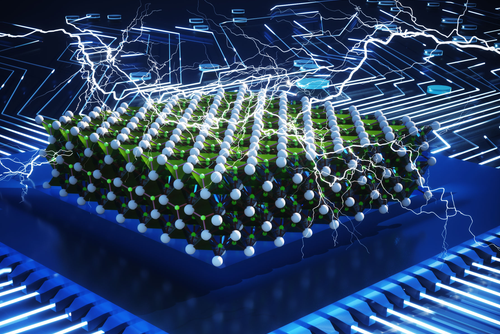Every transistor across entire network could process for less
A new power saving breakthrough in Silicon technology could dramatically cut the carbon consumption of telecoms networks. A study published in the journal Nature, describes a major energy saving breakthrough in the design of transistors, the tiny electrical switches that processors are made of. Engineers at the University of California, Berkeley have found a way to cut their energy consumption ’significantly’ without sacrificing speed, size or performance.
They have created a crystal lattice that coaxes a much better performance, for less energy, from the Gate Oxide, a key component for switching the transistor on and off. This efficiency improvement is created by a negative capacitance effect, which helps lower the voltage needed to store charge in a material.
The existence of negative capacitance was first discovered in 2008 and the effect first demonstrated in a ferroelectric crystal in 2011 by Sayeef Salahuddin, the TSMC Distinguished professor of Electrical Engineering and Computer Sciences at UC Berkeley. Since then there has been a long painstaking research for exactly the right crystal lattice structure to ‘catalyse’ the action of the transistors by lowering the energy they needed.
“We have been able to show that our gate-oxide technology is better than commercially available transistors: What the trillion-dollar semiconductor industry can do today — we can essentially beat them,” said Salahuddin.
The new study shows how negative capacitance can be achieved in an engineered crystal composed of a layered stack of hafnium oxide and zirconium oxide, which is readily compatible with advanced silicon transistors. Careful manipulation of the ferroelectricity, the property exhibited by any material when it creates a spontaneous electrical field, was previously only achievable with perovskites, whose crystal structure is not compatible with silicon. But in the breakthrough study, a team from the University of California paired hafnium oxide and zirconium oxide into a superlattice, an engineered crystal structure, which could simultaneously create ferroelectricity and antiferroelectricity.
Every CPU, GPU or DPU in every piece of equipment across a telco’s network, in the data centre, the IOT and the Mobile Edge, could run on significantly less power, said Salahuddin. As would the phones, tablets and laptops of the consumers.
“In the last 10 years, the energy used for computing has increased exponentially, already accounting for single digit percentages of the world’s energy production, which grows only linearly, without an end in sight,” Salahuddin said. “Usually, when we are using our computers and our cell phones, we don’t think about how much energy we are using. But it is a huge amount, and it is only going to go up. Our goal is to reduce the energy needs of this basic building block of computing, because that brings down the energy needs for the entire system.”
There are more details, including how the researchers discovered the effects of a superlattice structure composed of three atomic layers of zirconium oxide sandwiched between two single atomic layers of hafnium oxide, here.



